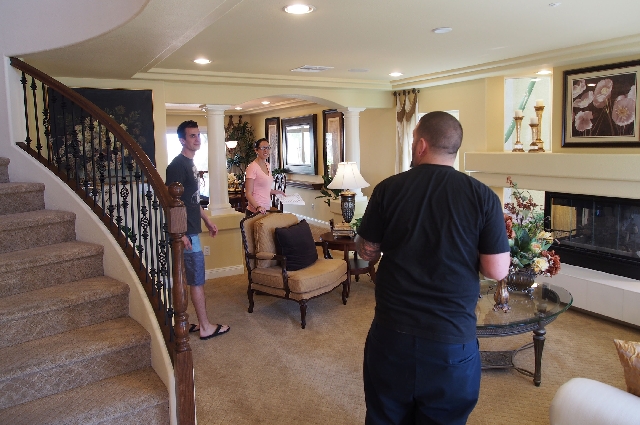Signs point toward housing recovery
WASHINGTON — U.S. housing starts topped the
1 million mark in March for the first time since June 2008. The gain signals continued strength for the housing recovery at the start of the spring buying season.
The overall pace of homes started rose 7 percent from February to March to a seasonally adjusted annual rate of 1.04 million, the Commerce Department said Tuesday.
Apartment construction, which tends to fluctuate sharply from month to month, led the surge: It jumped nearly 31 percent to an annual rate of 417,000, the fastest pace since January 2006.
By contrast, single-family home building, which makes up nearly two-thirds of the market, fell 4.8 percent to an annual rate of 619,000. That was down from February’s pace of 650,000, the fastest since May 2008. The government said February’s pace was a sharp 5.2 percent higher than it had previously estimated.
Applications for building permits, a gauge of future construction, declined 3.9 percent to an annual rate of 902,000. It was down from February’s rate of 939,000, which was also nearly a five-year high.
SalesTraq, a local housing research firm, doesn’t have March numbers yet, but its February data show strong improvements in new-home sales and permits.
Local builders closed on 497 units, up 73.8 percent from 286 closings in February 2012. Permits nearly doubled, to 463, up from 236.
Builders also more than doubled their closings in the first two months of the year, selling 1,009 units, compared with 501 units in January and February of 2012. In the same period, permits surged from 438 to 1,062.
SalesTraq said in a report that the boost in activity has come from limited housing availability and surging buyer demand.
Paul Ashworth, chief U.S. economist at Capital Economics, called the national data “obviously good news.” But he noted that the surge was a result of a jump in volatile apartment construction and said the pace of building could drop in April.
Still, home building is expected to contribute to economic growth in 2013 for a second straight year — a reversal from 2006 through 2011, when it held back the economy.
Deutsche Bank predicted that home construction will reach an annual pace of 1.2 million by year’s end. Brett Ryan, an economist at Deutsche Bank, said that rate could add 0.5 percentage points to 2013 growth. That would be the biggest contribution from housing since 2004.
The housing recovery could spur an additional percentage point of growth by encouraging more consumer spending, Ryan said. More building and higher home sales mean Americans will probably spend more on things such as furniture and landscaping. Higher home prices also create a “wealth effect” that gives homeowners the confidence to spend more.
Steady job growth, near record-low mortgage rates and rising home values have encouraged people to buy homes. In response to higher demand and a low supply of available homes for sale, builders have stepped up construction.
March’s pace of homes started was nearly 46 percent higher than in the same month in 2012.
Housing construction fell 5.8 percent in the Northeast but gained in the rest of the country, led by a 10.9 percent rise in the South. It rose 9.6 percent in the Midwest and 2.7 percent in the West.
The National Association of Home Builders/Wells Fargo April survey released Monday showed that builders are concerned that limited land and rising costs for building materials and labor could slow sales in the short term. That led to a third straight monthly drop in confidence.
Still, builders’ outlook for sales over the next six months climbed to the highest level in more than six years, suggesting the obstacles could be temporary.
And construction firms have stepped up hiring in recent months. They added 18,000 jobs in March and 169,000 since September, the Labor Department says.
Though new homes represent only a fraction of the housing market, they have an outsize impact on the economy. Each home built creates an average of three jobs for a year and generates about $90,000 in tax revenue, according to statistics from the homebuilders.
Las Vegas Review-Journal writer Jennifer Robison contributed to this report.






















